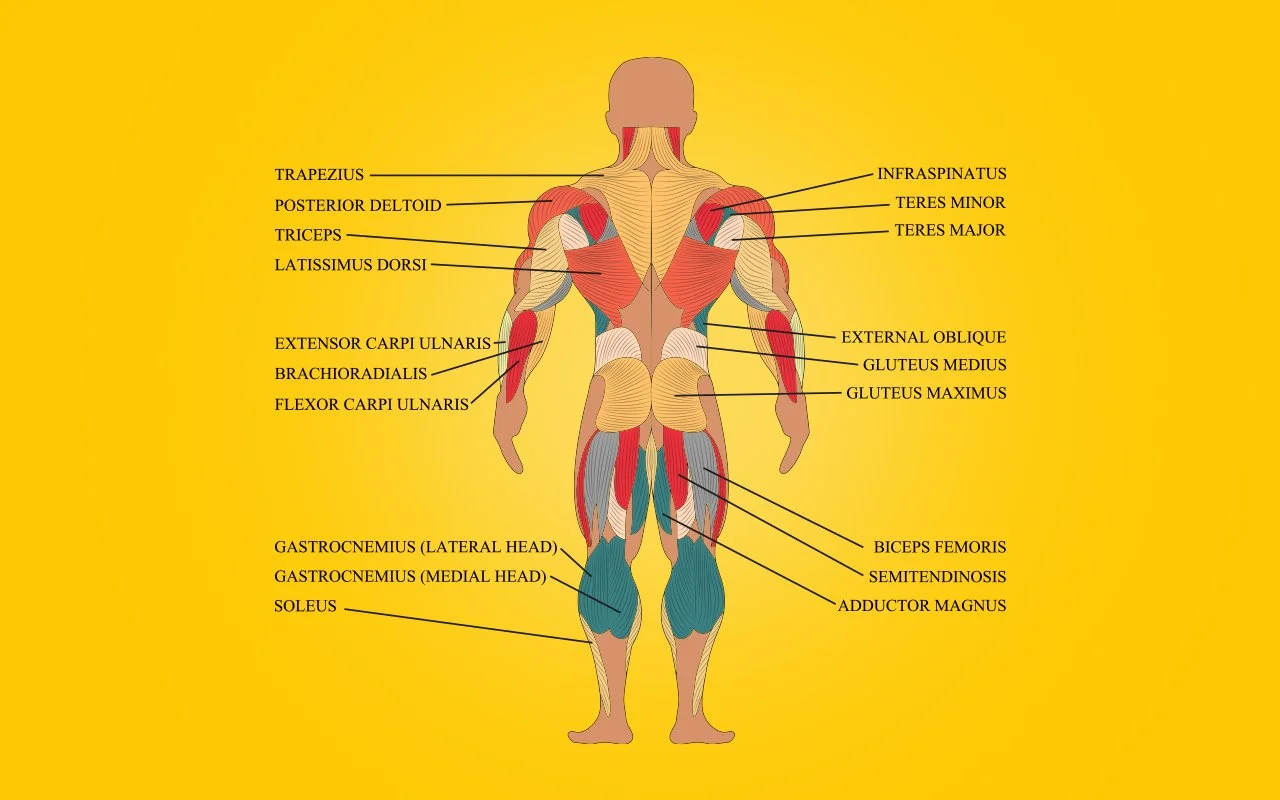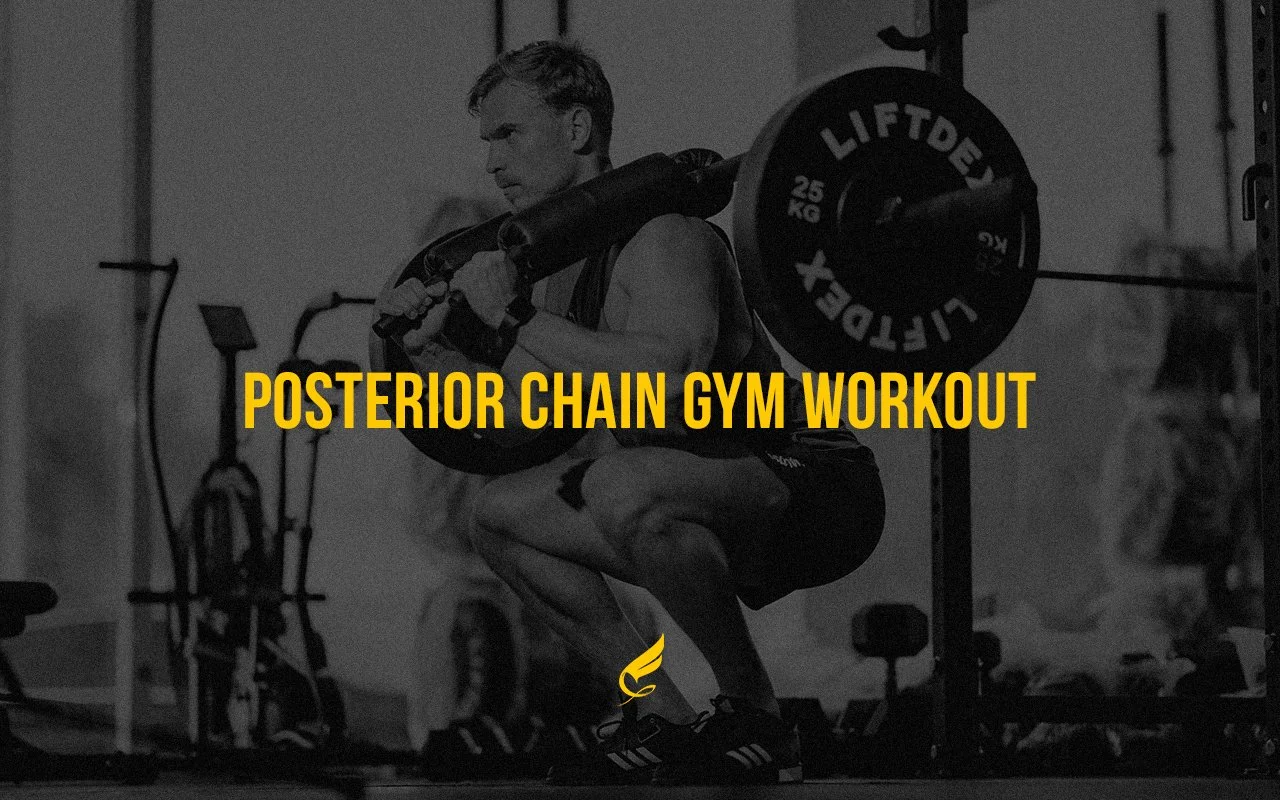Back and Hamstring Workout for a Stronger Posterior Chain
Introduction:
A strong and well-developed posterior chain—the muscles on the back of your body—is essential for optimal athletic performance, posture, and overall strength. This blog post provides a comprehensive back and hamstring workout routine designed to strengthen these crucial muscle groups and enhance your physique.
Which muscle groups belong to the posterior chain?
The posterior chain includes the following muscle groups:
Back: Erector spinae, latissimus dorsi, trapezius, rhomboids, and rear deltoids.
Hamstrings: Biceps femoris, semitendinosus, and semimembranosus.
Glutes: Gluteus maximus, gluteus medius, and gluteus minimus.
Calves: Gastrocnemius and soleus.
Should you be training your entire posterior chain in one workout?
Training the entire posterior chain in one workout can be an effective strategy. It allows you to target multiple muscle groups simultaneously, promoting overall strength and muscle development.
What is the recommended weekly volume for training the posterior chain?
The recommended weekly volume for training the posterior chain varies depending on individual factors, such as training experience, recovery capacity, and goals. However, a general guideline is to perform 2-3 sets of 8-12 repetitions for each exercise, 2-3 times per week.
-
Back - 4-8 sets/week
Gluts - 2-4 sets/week
Hamstrings 3-6 sets/week
-
Back - 6-10 sets/week
Gluts - 3-6 sets/week
Hamstrings 6-10 sets/week
-
Back - 8-15 sets/week
Gluts - 6-10 sets/week
Hamstrings 8-12 sets/week
Important notes:
Weekly volume recommendations include only working sets (warm-up sets not accounted for)
Some compound movements train 2 or 3 muscle groups which need to be taken into consideration when calculating volume (stiff leg deadlift trains the hamstrings, glutes, and erectors at the same time)
If you have a lagging body part, you might program higher volumes for that particular muscle while programming lower volumes for other muscle groups so that overall volumes for the entire body do not become so high that you can not recover from it.
The volume will depend on your ability to recover; no one approach fits all.
Posterior chain gym workout
Warm Up :
Hamstring Sliders 3x8-10
Hamstring sliders are an excellent exercise for warming up your hamstrings and glutes.
Execution:
Knees fully flexed, drive the elbows into the ground and initiate the movements by lifting the hips and squeezing the glutes while extending the legs into full extension before moving them back into the starting position.
Plank 3x30"
Planks are great for activating and strengthening your core muscles which play a vital role in all compound movements.
Execution:
Drive your elbows into the ground, ensure your body is in a straight line, and keep your tummy slightly tucked in, and squeeze the glutes and abdominals.
Banded Lat activation 3x8-10
The Latissimus dorsi is the biggest back muscle and is vital in movements like rows and pull-ups. A well-developed lat gives you that V-cut look that makes a good men's physique stand out in the crowd.
Execution:
Attack the band onto a pole slightly above your head, grab the band, and drive it down past your hip. When pulling the band down and towards you, you depress your shoulder blades.
The main portion of the workout:
A1 Conventional Deadlift 4x6
Conventional deadlift trains the entire posterior chain (hamstring, glutes, erector muscles, and upper back musculature).
Execution:
When performing the conventional deadlift, keep a flat back throughout the movement and get into a good hip hinge position with knees slightly bent but below the level of your hips. Before lifting off the weight, inhale, drive your knees slightly outwards, and depress your shoulder blades before pulling the weight up.
A1 Nordic Ham Curls 2x8
Nordic Ham Curls train the hamstring muscles and the core and are great for building powerful hamstrings.
Execution:
Kneel on a mat or bench and keep your legs locked to ensure movement stability. Place hands in the front and control the way down (hamstring extension) until you drop down. On the way up, help yourself by pushing your hands off the ground. Try to keep your spine neutral throughout the movements.
Important note : Nordic Ham Curls are a challenging exercise that might not be appropriate for beginner trainees. You might be better off replacing them with hamstring sliders or curls.
A3 Single Arm Kas Row 3x10
The single-arm Kas row trains your lats and is a great exercise that allows you to train the muscle through a full range of motion. It will let you load your muscle in its fully stretched position perfectly and then get it into a fully shortened position to maximize muscle gains!
Execution:
Find a row machine that allows you to add handles. Position your body in a way that will enable a full stretch, and ensure your core is tight and your ribcage locked in. A common mistake is that they flair their ribs and arch, which takes away from the exercise. When targeting your lats, you should avoid back extensions. Inhale and pull the handles so your elbows end close to your hip. Also, lean slightly towards your hip to fully shorten the Latisimus Dorsi muscle.
A4 Wide Grip Pull Ups 3x8-10
Wide Grip Pull-Ups train your forearms, biceps, and entire back, with special attention to your upper body musculature, such as your lats, rhomboids, trapezius, posterior delt, and other minor back muscles, which are vital for a well-developed back.
Execution:
When performing the wide grip pull-ups, keep your shoulder blades depressed and get your chest as close to the bar as possible. When you reach the bottom of the movement, fully stretch your lats before driving them up and squeezing at the top.
A5 Cable Biceps Curls 4x8-10
Imagine the feeling when the t-shirt is tight around your arms, and your biceps pop out! The cable biceps curl is great for shaping your arms and gaining serious muscle on your hands. The position allows you to stretch the muscle fibers under load for that extra bit of hypertrophy!
Execution:
Step forward with your body slightly leaning forward while holding the cable handles with both hands. Please ensure you are in a position where your elbows are close to your body and keep them there throughout the movement. Drive up until your elbows reach shoulder level, squeeze for one second at the top, and slowly lower down to a full stretch of the biceps muscle fibers.
Important note about tempo - do not worry too much about the tempo. Make sure you control the eccentric portion of the movements (the stretch), pause in the fully shortened position, and, depending on your preference, either control more or less the concentric phase (shortening phase of the movement). Focus on making each rep the same and train through the full range of motion!
Things to take into consideration when starting a new exercise program to increase your chances of getting great long-term results:
Proper Warm-up: Always warm up thoroughly before each workout to prepare your muscles and joints for the upcoming exercises.
Progressive Overload: Gradually increase the weight, resistance, or reps week after week to challenge your muscles and promote growth.
Rest and Recovery: Allow adequate rest between sets and workouts to promote muscle recovery and growth.
Nutrition: Ensure you consume a balanced diet that supports your fitness goals and provides the necessary nutrients for muscle growth and repair.
Consistency: Stick to your workout routine consistently to see optimal results.
Conclusion:
This back and hamstring workout routine is designed to strengthen your posterior chain, improve your physique, and enhance your overall fitness. Remember to prioritize proper form, progressive overload, and adequate rest and recovery for optimal results.
Improve your training and physique with the following blogs:
Find out more about our fitness services:
Learn more with UAE’s most comprehensive fitness blog:
#StayStrong
#BeFortius




